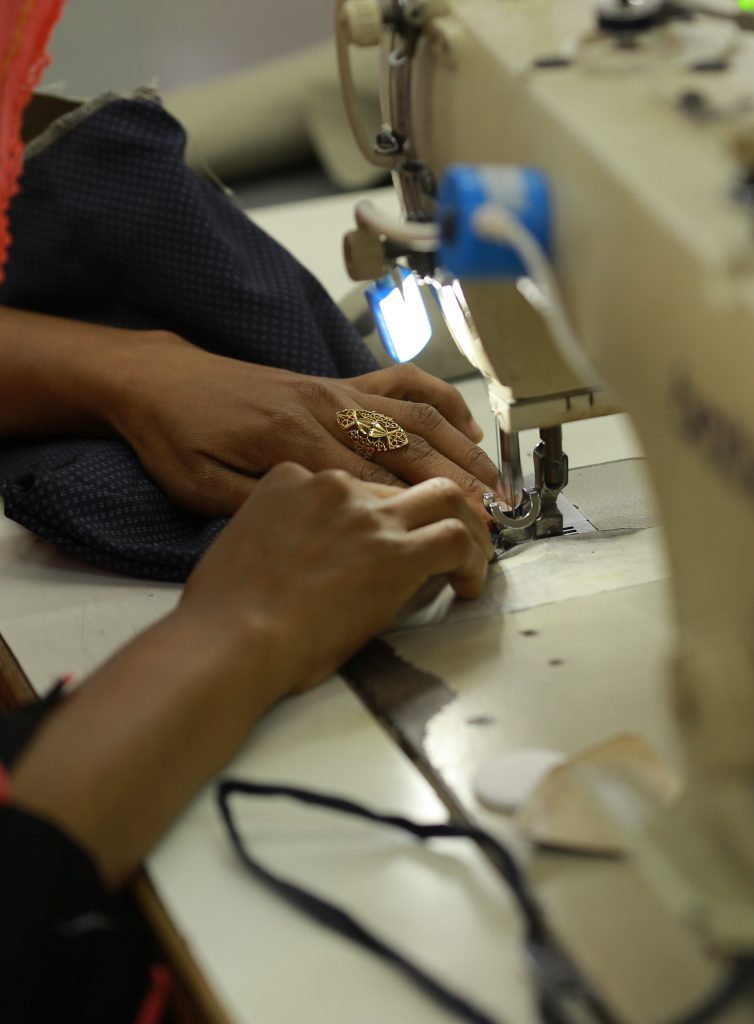Authors: Mohammad Daulat-Al-Rashid and Nafis Sadik
It takes around 3-4 years to recover the cost of partially automating a factory which in turn helps secure new orders to fill up the extra capacity and so factory owners are gradually moving towards innovative solutions. There comes the question of finding a balance between improving competitiveness and safeguarding the livelihoods of the workers.

Artificial Intelligence (AI), the ultra-futuristic Oscar nominated film directed by the famous Steven Spielberg, introduced us with human-like robots designed to care, crave, empathise, love, love back and whatnot! Awe-inspiring to think and unnerving at the same time, isn’t it? While the possibility of robots becoming so sentient seems far-fetched, such movies are not very far from the truth, at least because machines are breathing down the neck of many manual jobs worldwide while also becoming more humanoid than ever before.
Riding on the back of artificial intelligence (AI) and the internet of Things (IoT), automation has become the key to the fourth industrial revolution, making complex processes autonomous putting the labor intensive apparel sector at high risk. But how likely is it? From a nuanced optimistic view, the productivity benefits from automation should boost growth, meaning new categories of jobs will appear creating new opportunities. This may or may not be equally true for all the layers of manufacturing processes and its whole value chain.
Jobs Nearing the Risk
An Oxford Economics study puts 20 million manufacturing jobs at risk of losing out due to automation. A whopping 1.7 million jobs have already been lost to the 4th industrial revolution since 2000.
What about RMG? Over half of the quality checks in manufacturing worldwide involve visual confirmation, which are an easy target for AI. Automation is able to eliminate roles such as single and double needle lockstitch sewing machine operators, floor supervisors, pattern makers, quality control personnel, production planners, fashion designers and portfolio developers. Without emergence of new professions such as computer aided process planners, computer assisted quality control personnel, automated inspection, material handling device operators, artificial neural network experts, and fusing and pressing machine operators, the eliminated roles cannot be reintegrated into the industry.
Automation Scenario in RMG Ecosystem of Bangladesh
The worry that machines will replace jobs is not fully expendable since robots are already common in manufacturing. Smart sewing machines, smart sensors, jacquard machines, big data, 3D printing, are already being adopted. The automation of cutting, drawing patterns, and spreading has begun on a small scale. Also, manual administrative tasks like maintaining attendance or working hours have now become digitised. Usually, the large apparel factories are the ones who can afford automations early. These factories have the luxury to employ large numbers of workers, operate from their own facilities, and secure steady export orders from buyers; whereas automation has mostly threatened the sweater factory workers as sweater weaving needs the least extent of human touch in the whole process. Smaller factories are left so far behind in terms of innovation that many processes are yet to reach the levels required by the third Industrial Revolution.
Not to Worry but Lot to Prepare
In Bangladesh’s RMG industry, automation is not the primary reason for job loss. Unemployment also happens due to shrinking profit margins, higher minimum wages, and a slowdown in export orders. Workers of several skill and wage levels have been affected by automation. Specially, low-paid workers are the ones to receive the most of the hard blows due to their lack of basic knowledge to operate sophisticated machinery and hence are excluded from training.
Having stated these facts, it’s very easy to get carried away by the thought that Bangladesh will keep going slow to adopt automation in RMG, which will be an over-complacency for two reasons – (1) Bangladesh cannot afford to fall behind its competitors such as China, Vietnam and Cambodia and (2) it takes around 3-4 years to recover the cost of partially automating a factory which in turn helps secure new orders to fill up the extra capacity and so factory owners are gradually moving towards innovative solutions. There comes the question of finding a balance between improving competitiveness and safeguarding the livelihoods of the workers.
The common ground is to build an ecosystem to foster innovation and protect job security of the workers parallelly. This is the way forward. H&M Foundation has shaken hands with BRAC Social Innovation Lab to pave that path through the ‘Innovation Fund for Future-proofing RMG’ project in Bangladesh, a visionary initiative to catalyze a dialogue between the global south suppliers and the global north buyers which will be followed by an innovation challenge round to hunt ideas that can achieve the challenging two-fold goal and can be piloted with BRAC’s support. The project envisions to be the launchpad of innovative solutions that will converge with the RMG goals of BGMEA and the government, to make the country’s main bread earning industry future-fit.
- 1171 views
- 0 comments

